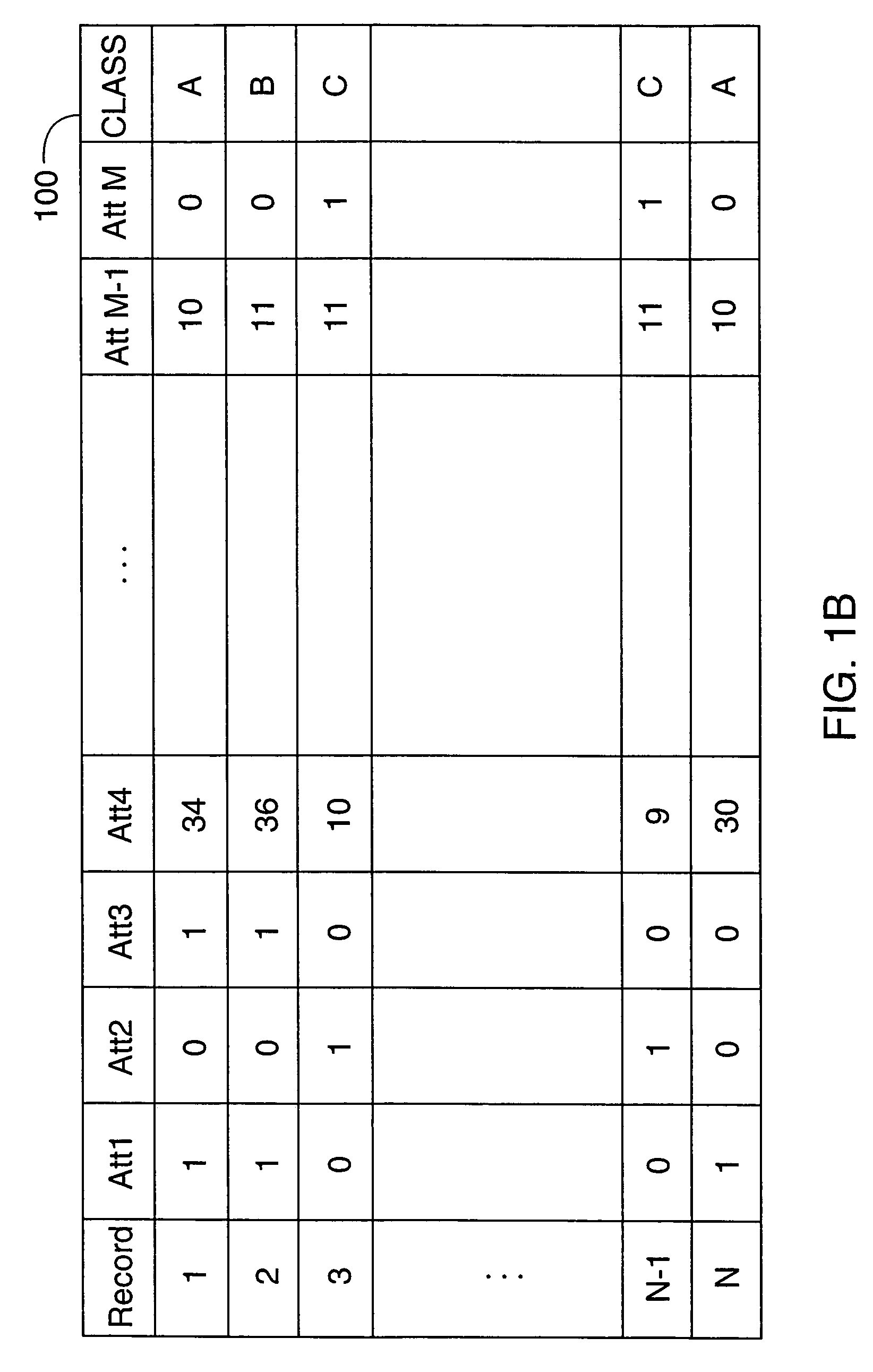Apparatus and accompanying methods for visualizing clusters of data and hierarchical cluster classifications
a cluster classification and data technology, applied in the field ofapparatus and accompanying methods for visualizing clusters of data and hierarchical cluster classification, can solve the problems of difficulty in analyzing the access patterns of thousands of users, difficulty in practical difficulty, and inability of web masters to include advertisements directed to teenagers on certain web pages, so as to facilitate user discovery and understanding, facilitate user discovery, and facilitate the effect of enhancing
- Summary
- Abstract
- Description
- Claims
- Application Information
AI Technical Summary
Benefits of technology
Problems solved by technology
Method used
Image
Examples
first embodiment
[0108]FIG. 8 depicts, in high level form, implementational components of the inventive CV system.
[0109]As shown, the CV system executes on computer system 800 which includes a central processing unit, memory, and input / output devices. The CV system includes collection storage component 801, categorizer component 802, category storage component 803, user interface component 804 and analysis component 805. The collection storage component contains the attribute value for each attribute of each record in the collection. The categorizer component inputs the records of the collection storage component and identifies the various categories and stores the identification of the categories in the category storage component. The user interface component inputs data from the collection storage component and the category storage component and generates the various category graphs which are displayed on display 806. The user interface component invokes the analysis component to process the categ...
second embodiment
[0120]FIG. 13 depicts, at a very high level, a block diagram of networked system 1300, that implements the present invention, to provide clustering, cluster summarization, segment scoring, segment comparison and interactive hierarchical display of segments of cases that illustratively occur in an Internet-based electronic commerce environment.
[0121]As shown, an Internet user stationed at client PC 1305 communicates through Internet 1320, via network connections 1315 and 1325, with server computer 1400 at a remote web site. This server implements, through Commerce Server system 1330, electronic commerce. Commerce Server system 1330 provides various functions that collectively implement infrastructure necessary to provide a comprehensive scalable, robust electronic business-to-business or business-to-consumer commerce web site; namely, user profiling, product cataloguing and content management, transaction processing, targeted marketing and merchandizing functionality, and analysis of...
PUM
 Login to View More
Login to View More Abstract
Description
Claims
Application Information
 Login to View More
Login to View More - R&D
- Intellectual Property
- Life Sciences
- Materials
- Tech Scout
- Unparalleled Data Quality
- Higher Quality Content
- 60% Fewer Hallucinations
Browse by: Latest US Patents, China's latest patents, Technical Efficacy Thesaurus, Application Domain, Technology Topic, Popular Technical Reports.
© 2025 PatSnap. All rights reserved.Legal|Privacy policy|Modern Slavery Act Transparency Statement|Sitemap|About US| Contact US: help@patsnap.com



